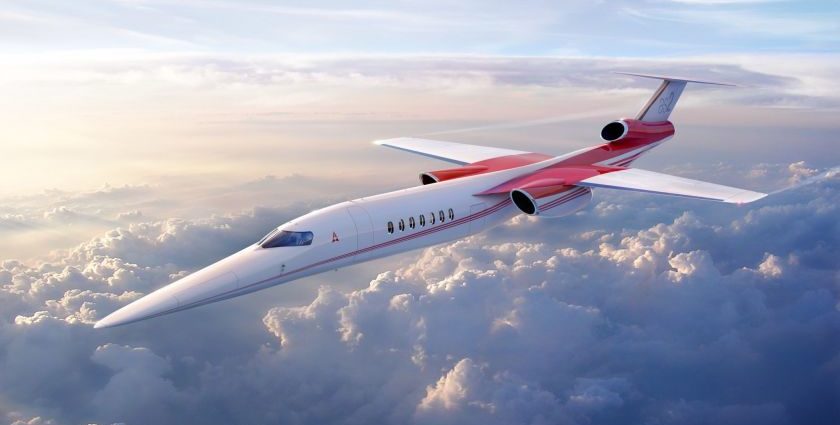In a landmark ruling, FAA creates an administrative process for aircraft developers to apply for ad-hoc supersonic flight approval over designated land areas.
In consideration of the continuing development of a new generation of supersonic aircraft, the FAA is modernizing the procedure for requesting a special flight authorization to operate in excess of Mach 1 over land in the United States. The renewed interest in the development of supersonic airplanes caused the FAA to review its application procedures that allow for flight tests of these aircraft. This final rule modifies the criteria for applying for these authorizations and moves the material from an appendix to regulation to make it easier to find and understand. Outside the context of special flight authorizations under this final rule, the FAA continues
generally to prohibit civil supersonic flight over land in the United States.
Supersonic History
The Supersonic Transport (SST) Concorde aircraft was introduced in the early 1970s. At that time, many in the aviation community thought that the time had arrived for regular supersonic air travel for passengers.
However, the Concorde has retired nearly two decades ago because of the high cost of meeting the environmental restrictions on sonic booms, inefficient fuel consumption, and other factors. Ultimately, the Concorde’s future as a viable transportation vehicle was limited.

Companies in the United States and abroad are now taking a new look at supersonic air travel. Lighter and more efficient composite materials, combined with new engine and airframe designs, may offer the potential for introduction of a viable SST.
In the area of supersonic aircraft noise, the Federal Aviation Administration (FAA) continually works to ensure the United States keeps pace with latest scientific, technological, and environmental advancements to maintain the safest, most efficient, and advanced airspace system in the world.
Supersonic Aircraft Noise Standards Development
As part of the Department of Transportation’s (DOT’s) priority on innovation in transportation, the DOT and the FAA are taking steps to advance the development of civil supersonic aircraft.
In line with this, the FAA is initiating two rulemaking activities on civil supersonic aircraft noise. The first activity is a proposed rule for noise certification of supersonic aircraft, and the second is a proposed rule to streamline and clarify the procedures to obtain special flight authorization for conducting supersonic flight-testing in the United States. The supersonic noise certification regulations of 14 Code of Federal Regulations (CFR) Part 36 do not apply to supersonic aircraft. The current rulemaking activity related to noise certification of supersonic aircraft will determine the technological and economic basis that supports noise level requirements that are appropriate for supersonic aircraft.
There is support in Congress for the advancement of new supersonic aircraft. Section 181 of the FAA Reauthorization Act of 2018 specifies that the FAA administrator exercise leadership in the creation of federal and international policies, regulations, and standards relating to the certification and safe and efficient operation of civil supersonic aircraft.
The publication of proposed rules will depend on the ongoing data and information gathering process being conducted. This is necessary in order for the FAA to fulfill its obligations under 49 U.S. Code (USC) 44715. The FAA anticipates meeting the statutory deadlines for the remaining proposed rule. The deadline to publish in the Federal Register a Notice of Proposed Rulemaking (NPRM) for noise certification of supersonic aircraft is March 31, 2020.
On June 17, 2019, Acting FAA Administrator Dan Elwell announced the imminent publication of the NPRM to streamline the process for obtaining approval for flight testing of new supersonic aircraft. The NPRM was published in the Federal Register on June 28, 2019.
Existing Supersonic Over Land Restrictions
Considerations of the impact of sonic booms from supersonic flight preceded the development of the Concorde aircraft. The Aircraft Noise Abatement Act of 1968 directed the FAA, after consultation with the DOT, to “prescribe and amend standards for the measurement of aircraft noise and sonic boom,” and, “… such rules and regulations as the (administrator of the FAA) may find necessary to provide for the control and abatement of aircraft noise and sonic boom.” In 1970, acting under this authority, the FAA proposed a regulation that would restrict operation of civil aircraft at speeds greater than Mach 1, unless authorized by the FAA. The regulation was finalized with minor changes on March 28, 1973 and codified at (now) 14 CFR 91.817 and Appendix B to Part 91.
The FAA’s existing restrictions can be found at 14 CFR Part 91.817. In essence, that regulation prohibits anyone from operating a civil aircraft at a true flight Mach number greater than 1 over land in the United States and from a certain distance off shore where a boom could reach U.S. shores. There is a procedure that allows supersonic operation under certain conditions granted on an individual basis. In addition, any new aircraft would need to meet current airworthiness and noise certification requirements.
The two supersonic rulemaking activities would not rescind the prohibition of flight in excess of Mach 1 over land. At the same time, the FAA is working within the existing statutory and regulatory authority to consider the range of permissible supersonic operations. In addition, the FAA is assessing the current state of supersonic aircraft technology in terms of mitigating the noise impacts associated with supersonic over land flight. To this end, Section 181 also requires a biennial review of aircraft noise and performance data beginning on December 31, 2020 to determine whether to amend the current ban on supersonic flight by civil aircraft over land in the United States.
Source: FAA, Headline photo: Aerion


Comments are closed, but trackbacks and pingbacks are open.